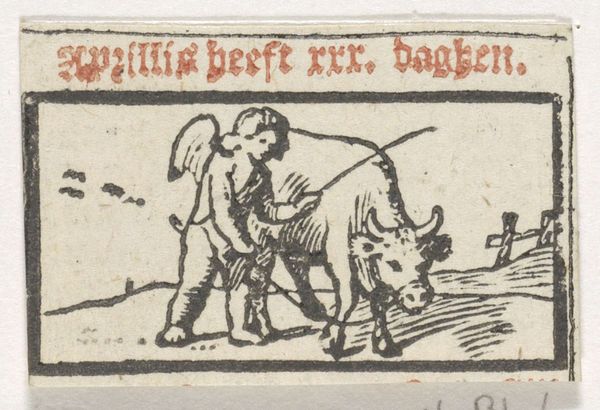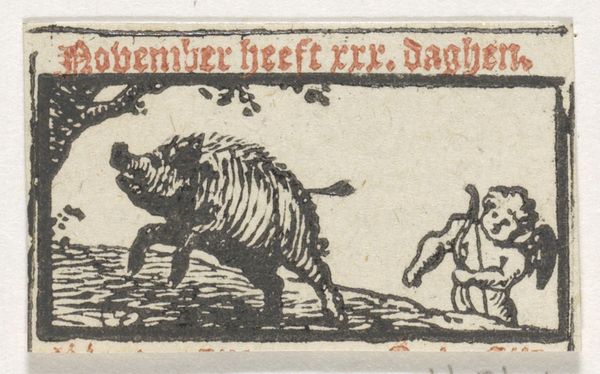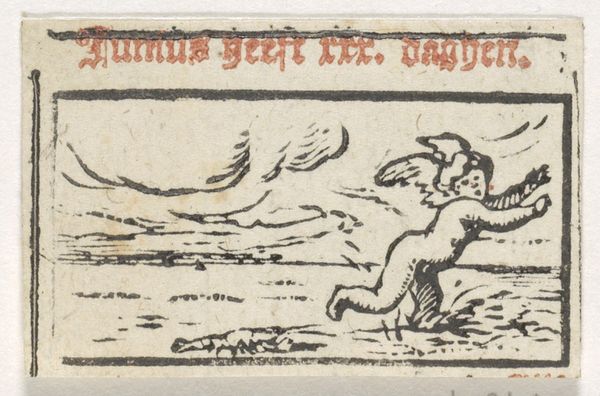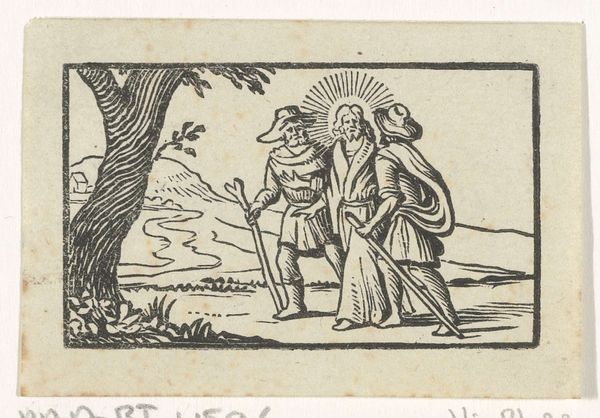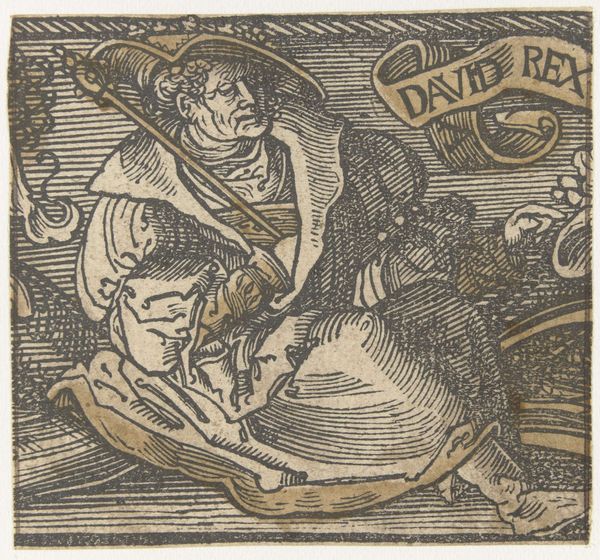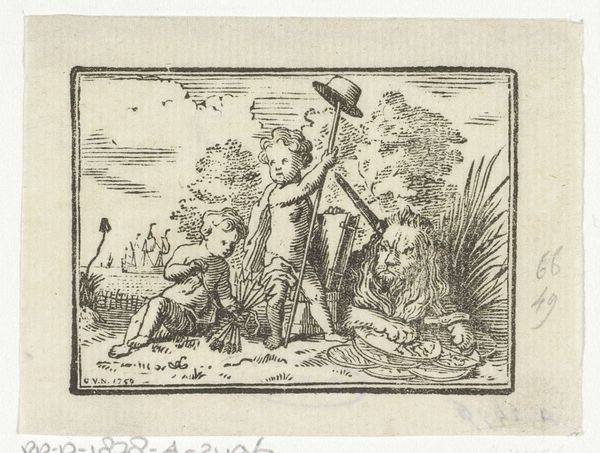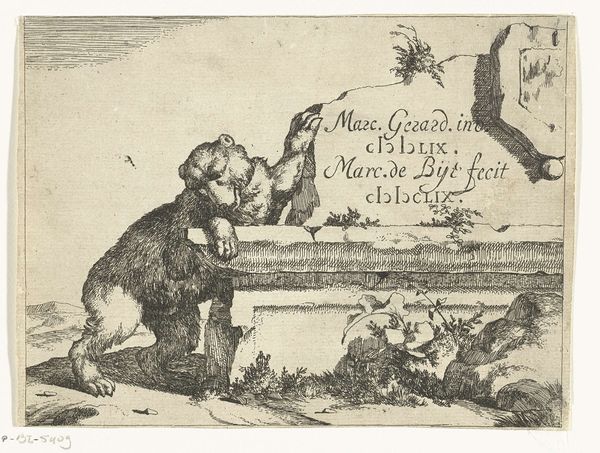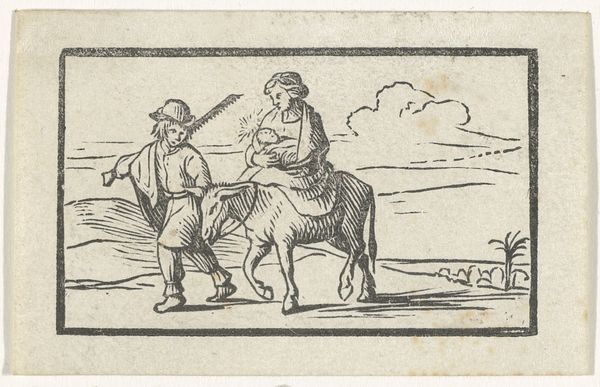
drawing, print, ink, woodcut
#
drawing
#
narrative-art
#
baroque
# print
#
figuration
#
ink
#
pen-ink sketch
#
woodcut
#
history-painting
Dimensions: height 24 mm, width 38 mm
Copyright: Rijks Museum: Open Domain
Curator: This diminutive woodcut, crafted by Dirck de Bray sometime between 1635 and 1694, presents a narrative scene featuring the Roman Emperor Augustus. It's executed with a fairly spare application of ink, giving it an almost sketch-like feel. Editor: There's a strange tension here. The lines, though simple, feel almost frantic in places. The stark contrast between the ink and paper creates a powerful, almost unsettling, image. Is this chaos intentional? Curator: It’s compelling to consider how the proliferation of such images in print form could shape popular perceptions of historical figures. Woodcuts like this allowed for wider dissemination, impacting collective cultural memory. And indeed, De Bray made several woodcuts illustrating the Roman Emperors in the same style. Editor: Yes, and it's hard to ignore the allegorical elements. Augustus seems removed, almost ethereal, on the right. And do you notice the child reaching amidst all the weeds? The weeds themselves seem to carry negative connotations of things we want to eliminate and bring forth themes of childhood innocence against these unwanted overgrown natural forms. Curator: It raises the interesting question of accessibility in art. A costly, singular painting was restricted to the elite, whereas this accessible, historical art through print, in a medium like woodcut, makes these classical images open for interpretation by common viewers and perhaps the younger generation. Editor: And look at the stark differences in posture. The almost chaotic gesture of reaching, the sharp angled plants...then the hand gesture of Augustus with his controlled lines that seems more like a performance or ritual rather than action. Curator: We should also consider the political dimension. The image subtly reinforces power structures, as imagery during the Baroque period frequently did. Augustus embodies ideal leadership—a stability in times of great transition in Dutch Society. Editor: Looking closely reveals the interesting role of the hand throughout the piece. We see gesture in the reach of the boy, the beckoning of the emperor, the small size reminds one of a token with all this captured potential of hands pointing, acting, grasping within a closed, pocket-sized piece. Curator: Precisely. These details contribute to a deeper reading of the cultural narrative around leadership. De Bray’s 'Augustus' invites us to think critically about the interplay between power, representation, and public memory. Editor: Agreed. There is almost a desire to see a different relationship play out with the boy, dog and natural vegetation juxtaposed against the cold imagery and stiff performance by Augustus with an undercurrent of a hopefulness among the reeds.
Comments
No comments
Be the first to comment and join the conversation on the ultimate creative platform.
